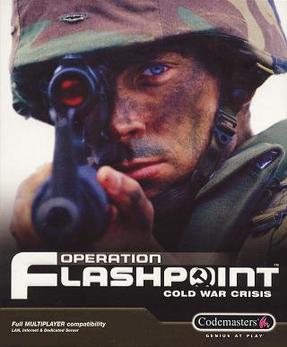
Operation Flashpoint: Cold War Crisis is a 2001 tactical shooter simulation video game developed by Bohemia Interactive Studio and published by Codemasters. Set during the Cold War in 1985, the game follows United States Armed Forces personnel in various combined arms roles as they combat a rogue Soviet Armed Forces field army invading the fictional island countries of Everon and Malden.

Magic Carpet is a 3D flying video game developed by Bullfrog Productions and published by Electronic Arts in 1994 for MS-DOS, PlayStation, and Sega Saturn platforms. Its graphics and gameplay were considered innovative and technically impressive at the time of its release.

Bohemia Interactive a.s. is a Czech video game developer and publisher based in Prague. The company focuses on creating military simulation games such as Operation Flashpoint: Cold War Crisis and the Arma series. It is also known for having worked on a game conversion of the DayZ mod created for Arma 2.
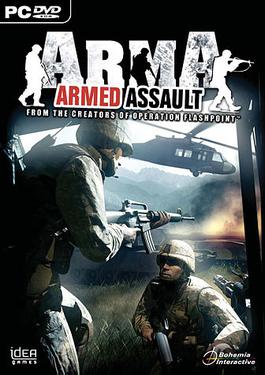
Arma: Armed Assault is a 2006 tactical shooter simulation video game developed by Bohemia Interactive and published by 505 Games in Europe and Atari in North America for Microsoft Windows. It is the first installment in the Arma series and is a spiritual successor to the 2001 video game Operation Flashpoint: Cold War Crisis, which was also developed by Bohemia. Set on the fictional Atlantic island of Sahrani, the game follows United States Armed Forces military advisors as they are caught in the midst of a conflict between the two rivalling nations on the island.
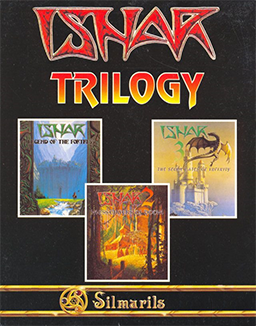
Ishar is a series of three role-playing video games by Silmarils for IBM PC compatibles, Amiga, Atari ST, and Macintosh. They are preceded by Crystals of Arborea. The games are played in first-person perspective, with all but Crystals of Arborea allowing the player to direct a group of five characters, each with a selectable race, gender, and class.

Soulstar is a hybrid rail shooter/third-person shooter video game developed and published by Core Design for the Sega CD in North America in September 1994, Europe in October by Core Design, and in Japan by Victor Entertainment on December 22.

Arma 2 is a 2009 tactical shooter simulation video game developed and published by Bohemia Interactive for Microsoft Windows. It is the second main entry in the Arma series and the third installment in the series overall. The game is set in the fictional Eastern European country of Chernarus during a civil war between the Chernarussian government and communist revolutionaries, and follows escalating tensions when the United States Marine Corps is deployed to defeat the rebels.
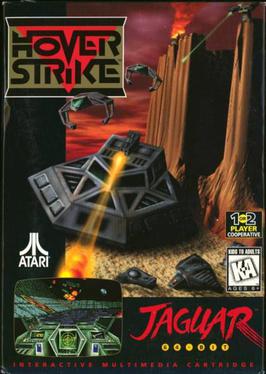
Hover Strike is a shooter video game developed and published by Atari Corporation exclusively for the Atari Jaguar first in North America in April 1995, then in Europe on May of the same year and later in Japan around the same period, where it was published instead by Messe Sansao. Taking place in a future where the Terrakian Pirates have seized control of a colonized foreign planet, players are tasked with piloting an armed hovercraft vehicle in an attempt of rescuing the captured colonists and obliterate the invading alien forces from the surface of the planet before the Federation armada arrives.

Robinson's Requiem is a 1994 survival simulation video game developed and originally published by Silmarils exclusively in Europe for the Atari ST, Atari Falcon and Amiga. Taking place in the 22nd century where Earth and colonized planets are facing overpopulation, the game sees players assuming the role of Robinson officer Trepliev 1 from the Alien World Exploration department in his attempt to escape imprisonment from the fictional planet of Zarathustra alongside another AWE Robinson named Nina1, while facing several hostile creatures and dangers in order to survive.

Deus is a 1996 survival simulation game developed by Silmarils and published by ReadySoft. It is the sequel to Robinson's Requiem.
Operation Flashpoint is a series of military simulation games. The first game, Operation Flashpoint: Cold War Crisis and its expansions Operation Flashpoint: Red Hammer and Operation Flashpoint: Resistance, was developed by Bohemia Interactive Studio. The second games, comprising Operation Flashpoint: Dragon Rising and Operation Flashpoint: Red River, were developed by Codemasters. There is also a spiritual sequel series to the original game made by Bohemia Interactive Studio, Arma.

Operation Flashpoint: Resistance is an expansion pack to Operation Flashpoint: Cold War Crisis. It was developed by Bohemia Interactive, authors of the original game, and published by Codemasters. It is the second expansion of Operation Flashpoint, the first one being Operation Flashpoint: Red Hammer, which was developed by Codemasters. Resistance was later re-released as part of ArmA: Cold War Assault.
Arma is a series of first- and third-person military tactical shooters developed by Czech game developer Bohemia Interactive and originally released for Microsoft Windows. The series centers around realistic depictions of modern warfare from various perspectives. Arma was originally conceived as a spiritual successor to Operation Flashpoint: Cold War Crisis after Bohemia Interactive lost the intellectual rights to the series. The first installment was released in 2006 and the most recent in 2022.
The video game industry in the Czech Republic has produced numerous globally successful video games such as Operation Flashpoint: Cold War Crisis and the subsequent ArmA series, the Mafia series, Truck Simulator series, the Kingdom Come: Deliverance series, the Samorost series and others. There were 300–400 video game developers and around 30 video game companies focusing on video game development in 2014. In 2017, the country had 1,100 developers and 47 companies. Video games are also considered by some experts to be the country's biggest cultural export. The video game industry did not enjoy a good reputation and was unsupported by the state until 2013, when the Ministry of Industry and Trade started to seek ways to kickstart the economy. By 2014, programs were planned to support the video game industry. Another problem is a lack of video game development specialization at any university.

Hlava Kasandry is a 1993 Czech video game, developed by Marek Nepožitek's company LetDisk and based on the Polish novel Głowa Kasandry. It was released on the Atari ST but is compatible with Atari TT and Atari Falcon.

Virtuoso is a third-person shooter video game developed by MotiveTime and originally published by Nova Spring and Elite Systems in North America and Europe, respectively, for DOS in 1994 and then 3DO in 1995.

Hover Strike: Unconquered Lands is a shooter video game developed and published by Atari Corporation exclusively for the Atari Jaguar CD in North America and Europe on October 23, 1995. A remake of Hover Strike for the Atari Jaguar, it was created by most of the original team who worked on the original game and both titles share the same overall plot, where the Terrakian alien race seized control of a colonized foreign planet and players are tasked with piloting an armed hovercraft vehicle in an attempt of rescuing the captured colonists and destroy the invading forces from the planet's surface before the Federation armada arrives.
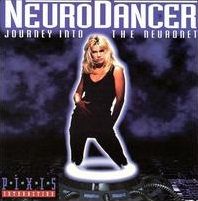
NeuroDancer: Journey Into the Neuronet! is a 1994 adult action-maze video game developed by American studio Electric Dreams and published by PIXIS Interactive in North America for the 3DO Interactive Multiplayer, Macintosh and Windows.
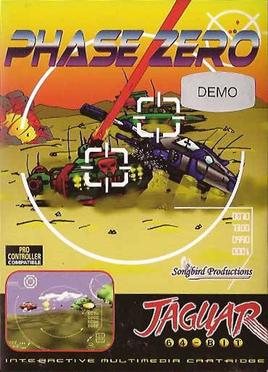
Phase Zero is an unfinished shooter video game that was being developed by Hyper Image Productions and would have been published by Atari for the Atari Jaguar. Set in the future on a terrestrial planet, the player takes on the role of a newcomer to the Phase Zero squad, piloting a hovercraft to fight rival corporate states. The player is tasked with various objectives while fighting enemies in multiple missions.

















